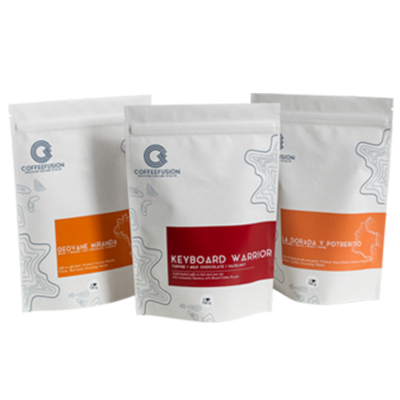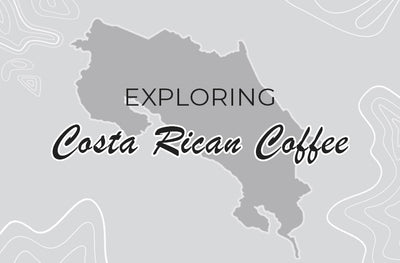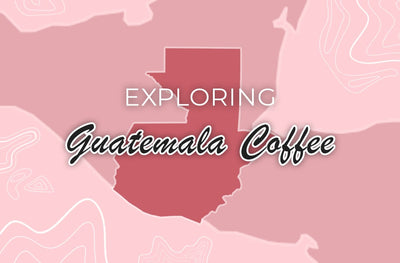Finding a great cup of coffee is an art form. Whether you're taking a break from work or just relaxing at home, there's nothing quite like a cup of coffee to get you through the day. The beans must be roasted to perfection and then brewed with just the right amount of water and pressure. But where do you find the high quality coffee? Some might say Costa Rica or Ethiopia, others Colombia or Guatemala. And they're right. But what about coffee in Rwanda? This small country is home to some of the greatest Arabica beans on earth, and baristas everywhere are beginning to take notice. Let's explore Rwanda's specialty coffee.
Explore our current single origins and blends with our coffee subscription

44 Five Star Reviews
Our coffee subscription let’s you choose your favourite style of coffee and it ensures that you never run out of freshly roasted coffee.
What to expect:
✔ Start with a Free Trial✔ Pause, modify or cancel at any time
✔ Monthly giveaways for subscribers
✔ Exclusive free brewing videos and other tips
✔ Access to our private Facebook Group
Is Rwanda Known for Coffee? Characteristics
Rwanda is indeed known for its coffee, and rightfully so. The country's mountains rise up sharply from the surrounding plains, so you find high altitudes of 1,200–2,000 meters above sea and volcanic soils that create ideal growing conditions for coffee. These elevations result in a slower maturation rate for the coffee cherries, leading to more complex flavour profiles in the beans. The Rwanda coffee – 95% Arabica Bourbon – has a silky yet creamy body with tasting notes of caramel and spice and floral aromatics, with a pleasantly balanced acidity level.
Compared to other coffees from its neighbours, such as Ethiopia and Kenya, Rwanda beans stand out for their mix of acidity – similar to the Kenya coffee – and the sweetness and floral/citrus notes of Ethiopian coffee. In short, simply the best of both worlds. And Rwandan coffee farmers have implemented a processing method in their communal washing stations with quality control standards that further intensify the distinctive flavour of the beans.
The History of Coffee In The 'Land of A Thousand Hills'
German missionaries were the first ones to introduce coffee trees to the country in 1904. Coffee production on a more serious scale began in 1930. Although it was mostly low-grade at those early stages because everything was controlled by a government exporting organisation (Rwandex) and incentives for Rwandan coffee farmers didn't exist, the high volume of green coffee production generated significant cash crops, positively impacting the economy.
In 1994, the Rwandan Genocide happened, a civil war that targeted a minority group called Tutsi, leaving estimated deaths of 500K–1M. The country was ruined in many aspects, especially in the economic one. A couple of years later, entering the 2000s, the Rwandan government started working to reverse the economic debacle by easing restrictions for the Rwandan coffee farmer and prioritising quality and trading to get the economy back on track.
Afterwards, several NGOs around the world collaborated with Rwanda to rebuild the Rwandan coffee industry. USAID invested in technical assistance, training, and financial support to the coffee sector through ACDI/VOCA and DCA programs – the most known projects were Assistance à la Dynamisation de l' Agribusiness au Rwanda (ADAR) and Partnership for Enhancing Agriculture in Rwanda through Linkages (PEARL). These efforts helped develop 46 coffee washing stations and trained hundreds of Rwandan rural farmers in coffee production, processing, washing station management, and marketing.
Today, coffee alone represents 5.6% of Rwanda's economy, according to the latest figures reported by The Observatory of Economic Complexity (OEC). And Rwanda currently ranks 9th out of 21 among Africa's largest coffee producers and 30th out of 51 worldwide.
There are more than 450,000 small-scale coffee farms who, on average, own less than a hectare or 165–175 coffee trees to cultivate coffee beans.
Where Is Coffee Grown In Rwanda? 5 Key Coffee Regions
While this landlocked country in the eastern part of Africa might not be the first place that comes to mind when you think of coffee, Rwanda is actually one of the world's top producers of this beloved beverage. Most Rwandan coffee beans is grown in Virunga, Muhazi, Kivu, Kizi Rift, and Akagera. Now, what do we know about these coffee growing regions?

1. Virunga
The northernmost mountain region is home to the majestic Silverback mountain gorillas. It's known for a coffee with mixed fruit, caramel notes, and clear brightness. The high altitude of 1,500–2,000 meters and rich volcanic soil are combined with cool climate conditions where there's plenty of sun and rain. This allows the beans to ripen slowly, creating a cup that radiates smooth honey notes, hints of redcurrant and lively acidity.

2. Muhazi
With an elevation of 1,200–1,500 meters, volcanic soils and pure water, the Muhazi Lake – located in the eastern part of Rwanda – is a powerful contributor to the creation of a special blend of tea, cocoa and spices coffee notes. It's a region that has a warm climate, ample rainfall, and rich soils. Rwanda's tallest Arabic Bourbon varietal trees are found here, producing large, bright beans. Coffee with character? Muhazi is a truly one-of-a-kind region.

3. Lake Kivu
Sharing borders with the Democratic Republic of Congo, Lake Kivu region has an optimal climate at an altitude of 1,300–1,800 meters, rolling green hills and volcanic soil, this region yields coffee with an oh-so-good complexity. What I mean by that is how the chocolate notes and the floral aroma of jazzy jasmine play together and complement each other in a way that transports you to a new world that even the most discerning palate could be fascinated by.

4. Kizi Rift
Located at an altitude of 1,800–2,000 meters, this region stretches from the rainforest of Nyungwe to the grand entrance of the volcanic Virunga Mountains, right in the centre of Rwanda. In Kizi Rift, the nutrients of the volcanic soil bring a balanced, smooth, clean, nutty and berry-flavoured that bursts with enchanting nuances.

5. Akagera
Akagera is a region in southeastern Rwanda bordering Tanzania and is characterised by low mountains and fertile, rich soil. It has an elevation of about 1,200-1,500 meters above sea level, and rainfall is even lower. The coffee from this area is slightly lower in acidity than in other coffee regions, and the tasting notes are predominantly sweet with strong floral notes.
How Does Rwanda Coffee Processing Work?
In Rwanda specialty coffee industry, coffee processing typically employs the wet process method. The cherries are delivered to a washing station where it's pulped. Then, the coffee beans are separated from the cherry mucilage and enter soak water tanks for around 12–24 hours to be fermented. After fermentation, coffee will be moved to the drying tables, which gives more control over the process and leads to a cleaner cup of coffee. Depending on weather conditions, coffee remains on the drying tables anywhere from 12-48 hours. Last but not least, the final step is inspection and bagging. And the coffee is now ready to be exported.
The Flavour Profile of Rwandan Coffee Beans
Generally speaking, Rwanda coffee is often described as having a bright, fruity flavour. The acidity is high, which gives it a vibrant taste, and you may also notice hints of floral/citrus notes. In terms of the body, it's medium to light, and the finish is clean and crisp. Overall, Rwandan coffee is a great option for those who enjoy a refreshing, well-rounded, easy-to-drink perfect cup of coffee. But talking about flavour profiles implies aroma, taste, and aftertaste.
- Aroma: light with hints of lemon and orange blossom.
- Taste: floral with a mix of fruity, redcurrant, and berry flavours.
- Aftertaste: rich and sweet with notes of caramel and white chocolate.
Brewing Methods for Rwanda Coffee Beans
These Rwanda coffee beans – often used in blends or single origin coffee – are typically brewed with two main methods: the pour-over method and the drip coffee maker method.
Pour Over
The pour-over method is a manual brewing way that involves slowly pouring hot water over the coffee grounds. It allows you to control the brewing process and produce a cup of coffee customised to your taste. With this brewing method, you can adjust the water temperature, grind size, and pour speed to create a coffee with a smooth flavour and moderate acidity, accentuating Rwanda's coffee sweetness.
Drip Coffee Maker
Coffee without worrying too much about the details. The drip coffee maker option lets you also control the water temperature, water flow rate, and brew time, all of which play a role in the final taste of your coffee. The coffee is brewed slowly and evenly, resulting in a rich, full-bodied cup. Additionally, they're easy to use and require minimal cleanup.
How Do We Roast Rwandan Coffee?
There's not a single type of roast for Rwandan coffee beans. But the best roast types for these high quality beans are lighter roasts and medium roast to dark roast. Lighter roasts bring out the fruity, citrus, and floral flavours, while medium to dark roasts enhances the silkiness and creaminess of the body. So both lighter or darker roasts have their advantages in the cup. Ultimately, it's up to you to experiment and go for the roast you like most.
Rwanda's Coffee Industry Production & Exports
Coffee plants flower between September and October, and then coffee cherries are ready for harvest in March and July. Major markets for Rwandan coffee include the United States, Switzerland, the United Kingdom, Belgium and Singapore.
The official site of the Rwanda Development Board (RBD) states that the country has seen a yearly increase in washed and ordinary coffee export volumes and revenues.
And when we take a closer look at the International Coffee Organization (ICO) numbers, these are the recent crop year coffee production in Rwanda.
- 2017: 264,000 bags = 15,840,000 kg
- 2018: 380,000 bags = 22,800,000 kg
- 2019: 348,000 bags = 20,880,000 kg
- 2020: 370,000 bags = 22,200,000 kg
*For reference, each bag of coffee is 60 kg.
Small Country But Big On Coffee
Next time you're enjoying a cup of coffee, take a moment to think about the long journey it took to get from the farm to your mug. Chances are, there's a little bit of Rwanda in there too. Rwandan coffee is definitely a hidden gem in the East African coffee scene. The country's climate and mountainous landscape and more factors make these coffee beans special.
How does Rwanda coffee processing work? What flavour profile does it have? These are all questions we answered in this post. Roasting, processing, and brewing Rwanda coffee produce an exquisite Bourbon Arabica cup with a taste that varies depending on the region where it was grown. So if you're already convinced and want to buy Rwanda coffee beans, subscribe to online coffee beans in Australia and get your Rwanda coffee this week.




Leave a comment
Please note, comments must be approved before they are published